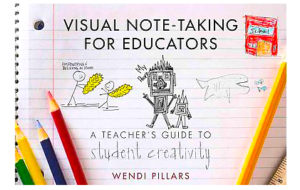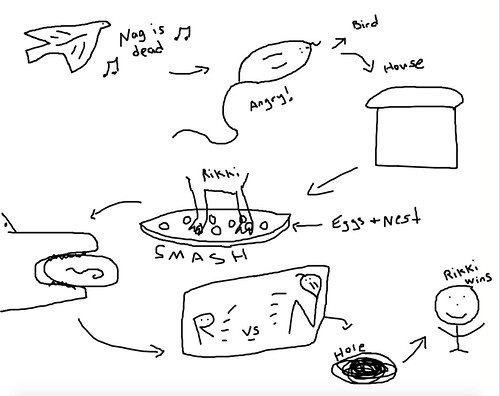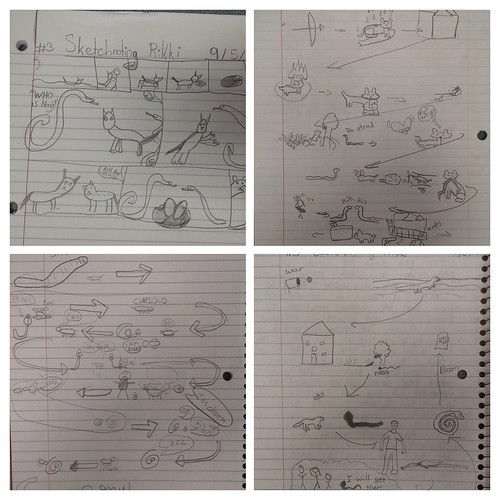One of my goals for my sixth grade students this year is to learn how to do visual notetaking, or sketchnoting. When I asked each class of students how many doodled in the margins of notes, many hands went up. When I asked how many doodled to help remember what the teacher was saying or doodled as they were listening to a video or as they were reading a text to capture main ideas, very few hands stayed up.
We’re gonna bring those doodles into the main frame this year (and hopefully, not suck all of the fun out of drawing for them.)
I’ve started rather slow and simple. I traditionally begin the year reading Rudyard Kipling’s Rikki Tikki Tavi as my touchstone text for the year. It’s a story I will return to again and again as a common experience, and we work the story through discussions of protagonist, antagonist, conflict/resolution, foreshadowing and setting early and often.
This year, I had them sketchnote as they listened to me read aloud the story. (I did a small bit of this last year, around the presidential inauguration address.) I shared a video that gives a good overview of what sketchnoting is, and told them not to be intimidated by the young person’s amazing art, and then set them free to doodle as they did active listening.
Each day, after reading, I have shared my own sketchnotes with them (see the embedded images, which captured my drawings on the interactive board) and then talked my way through how the sketches help me remember characters and story. I also want them to show them that you don’t need to be a great artist to do this kind of work. You just need to have a library of shortcuts and a logical systems approach (my system moves from left to right, and then right to left, with arrows to help move me along in the reading).
That’s what this is all about: active listening. And it is what this particular class of students needs, given what I know about them in the past year and what I am already seeing. I am hoping the art element draws in more of them as learners.
I realize I have some questions yet to tackle when it comes to using this sketchnoting concept with them:
- How to help students already easily distracted to listen and doodle at the same time?
- How to help them filter out what is important enough to be doodled and how to figure out what to leave out?
- How to teach them the use of artistic lettering in order to use words as art in meaningful ways?
- How do I demonstrate that sketchnoting has actually helped improve their writing and understanding of complex topics?
- How to help them form a personalized systematic approach for the flow of their own sketchtnoting?
These will all be on my mind as I move forward into the school year. If you have experience or advice, I am all ears. This concept got a real boost this summer with my CLMOOC experience, as we used the theme of art to explore visual notetaking in ways that inspired me to begin early, and often, with my students.
I also have used this book — Visual Note-taking for Educators — by Wendy Pillars to think about this whole concept, and now that I have started with students, I need to go back and re-read some of her helpful suggestions and ideas.

Peace (drawn in ink),
Kevin


